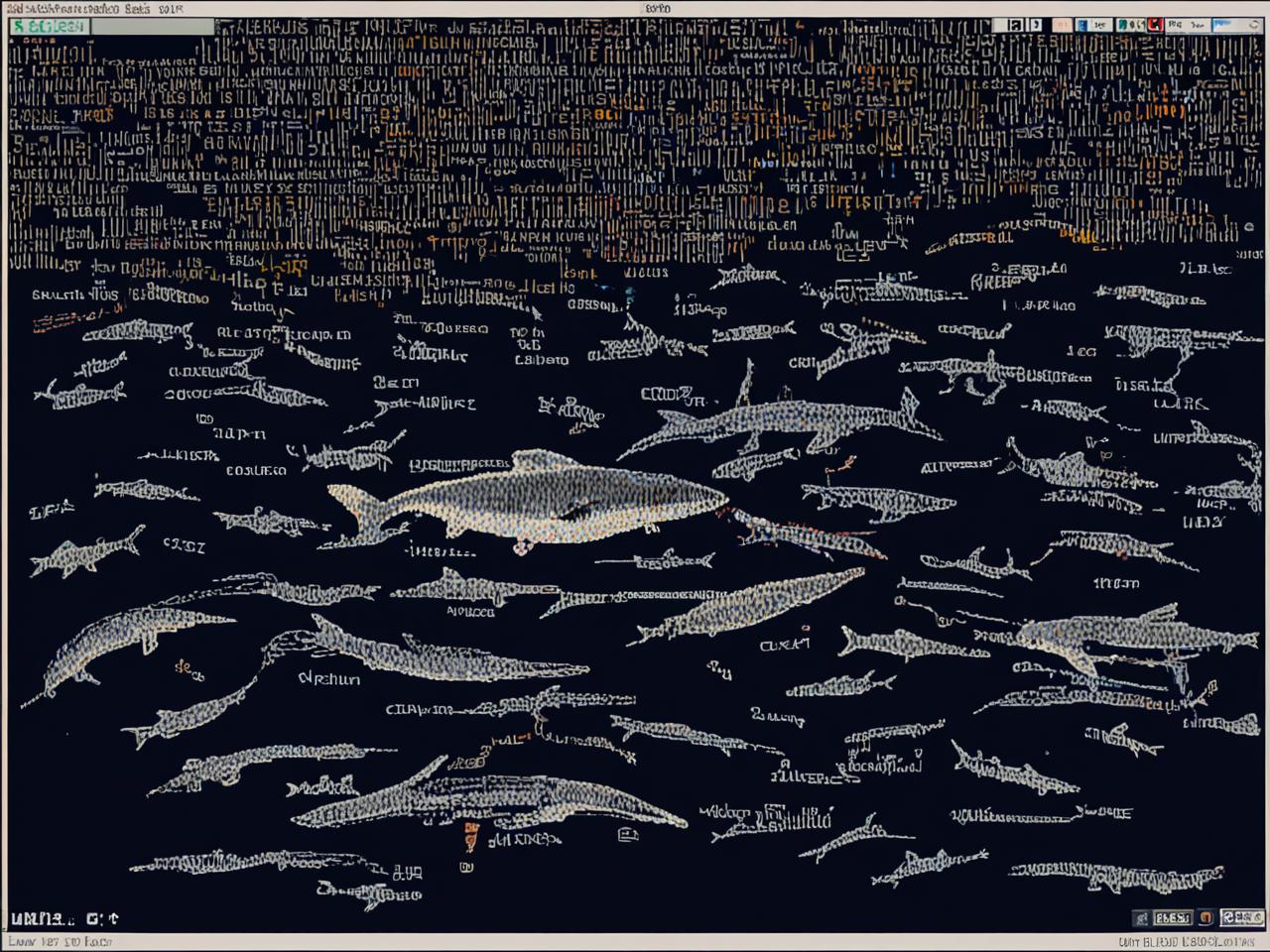百万人鱼,一条文明的暗流
本文目录导读:
在浩瀚的中华文明长河中,"鱼"这个意象始终如一地在历史的天空中闪耀着永恒的光芒,它不仅是水生生物的象征,更是中华民族智慧的结晶,是先民们对自然的敬畏与理解,是文明传承的无声诉说,从商周时期的青铜鱼器到今天海洋生态保护的呼唤,"鱼"始终是中华文明的一条暗流,流淌在历史的长河中,见证着时代的变迁与文明的升华。
历史长河中的鱼:文明的象征
在商周时期,青铜器的铸造已经有了高度发达的工艺, Fish with human-like heads and elaborate decorations were common in their art. Fish were not only functional but also deeply symbolic. The fish with human-like heads, known as "人面鱼"(maned fish), symbolized the fusion of human and divine attributes. This artistic expression was a testament to the Pythagorean belief that the universe was governed by numbers and harmony. Fish were also used as religious symbols, representing the afterlife and the connection between the mortal world and the divine.

Fish were integral to the spiritual and cultural life of ancient China. They were considered messengers of the gods, capable of communicating with the spirits in the afterlife. The fishing industry was a vital part of the economy, and fishing techniques and tools were subjects of scholarly study. Fish were also used in rituals and ceremonies, symbolizing abundance, prosperity, and the cyclical nature of life.
文明的暗流:鱼的智慧与灵性
在中国传统文化中,鱼象征着智慧与灵性。 The fish is often depicted with a human-like head and elaborate decorations, symbolizing the fusion of human and divine attributes. This artistic expression was a testament to the Pythagorean belief that the universe was governed by numbers and harmony. Fish were also considered to possess the ability to predict the future and bring good fortune, which made them popular in divination and gambling.
Fish also symbolize the adaptability and resilience of Chinese people. The fish is often depicted in art and literature with a sense of movement and flexibility, representing the ability of the Chinese people to adapt to changing circumstances and overcome adversity. This spirit of adaptability is reflected in the famous poem "The Fisherman's Catch"(渔翁得鱼), which describes a fisherman who catches a fish that seems to be alive, symbolizing the unexpected and unpredictable nature of life.
现代文明中的鱼:文明的延续与反思
进入现代社会,"鱼"这一意象依然在不同的领域中发挥着重要作用。 Fish are not only important in traditional Chinese culture but also in modern environmental consciousness. The rise of marine conservation has brought back the fish to the limelight, reminding us of the importance of protecting our natural resources. Fish are also symbols of sustainability and harmony with nature. The concept of "sustainable fishing" has become a global issue, with fish playing a central role in discussions about environmental protection.
Fish also continue to inspire technological and cultural innovations. The study of fish biology has led to breakthroughs in biotechnology and medicine. Fish are also a source of inspiration for art, literature, and film. The famous novel "Journey to the West"(西游记) features a fish-like creature, the Tang Monk, which adds a touch of humor and absurdity to the story, reflecting the diverse and unpredictable nature of Chinese culture.
Fish also serve as a reminder of the interconnectedness of all life forms. The ocean is not just a place for fish but also for humans, and the relationship between humans and fish has always been complex. In today's fast-paced and competitive world, the bond between a fisherman and his fish represents the delicate balance between human exploitation and natural rhythms. This relationship is a microcosm of the larger ecological and social dynamics of our time.
Fish are not just food or pets; they are a window into the heart of Chinese culture and the soul of our civilization. From ancient times to the present day, fish have been a symbol of wisdom, adaptability, and harmony. As we look to the future, we must remember the lessons of the fish: the importance of preserving our natural resources, the need for sustainable development, and the value of maintaining a harmonious relationship with the environment. Fish, as a symbol of our past and a guide to our future, continue to remind us of the depth and complexity of our civilization.